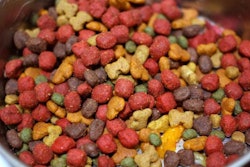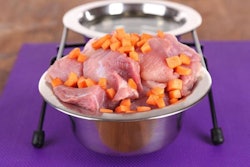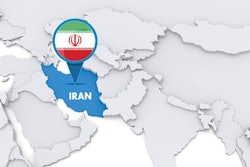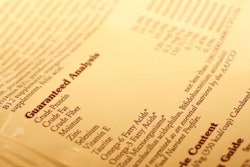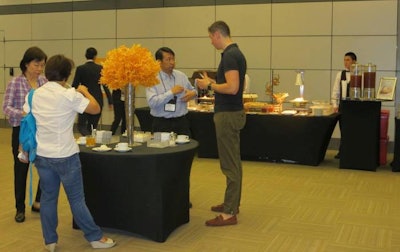
Asian pet food markets posted the highest growth rates in 2015, ranging from about 10% for China and the Philippines, to nearly 14% for Thailand and Indonesia, up to over 25% for India. That’s according to data presented by Mariko Takemura, lead analyst for Euromonitor International, during Petfood Forum Asia 2016, March 30 in Bangkok, Thailand.
Takemura said Asia accounted for 9%, or US$9.8 billion in sales, of the US$105 billion global pet care market in 2015. (That’s for all pet products, not just pet food.) The region’s compound annual growth rate (CAGR), at 4.6%, is keeping pace with the global growth rate of 4-5%, obviously driven by those small but robust markets in Southeast Asia. With a relatively low penetration rate for commercial pet food—more than 60% of pets eat table scraps or homemade pet food—these countries present a significant opportunity for pet food companies.
While Japan still dominates the Asia region in terms of overall pet care sales, at US$4.8 billion in 2015, its growth has stalled, registering only 0.4% CAGR over the past five years, Takemura said. Still, the country has 20 million cats and dogs whose owners spend US$78 per pet each year. Dry dog food is the largest pet product category, with about US$1.1 billion in sales last year, but it is shrinking, while dry cat food—in fact, all cat products—are increasing in sales because the cat population in Japan is rising. Dry cat food sales reached about US$893 million in 2015, followed by wet cat food at US$586 million. Cat treats registered less than US$100 million but boasted a 19% CAGR from 2010-2015.
Thailand appears to be the exact opposite of Japan: small market size yet with very healthy growth, particularly for dry dog food, with less emphasis on cats (though cat food categories show high growth, too). In 2015, Takemura reported, Thailand reached US$737 million in overall pet care sales and continued its five-year CAGR of 13.7%. Its 8.2 million dogs and cats enjoyed US$52 spending each. Dry dog food accounted for nearly half the overall pet care market, at US$341 million, and increased nearly 15%. Wet dog food, dog treats and cat food all saw much lower sales, yet, are growing 13-16% a year.
With their economies and consumers’ disposable incomes rising, these countries’ pet food markets are projected to continue to grow, Takemura said. That growth is also driven by increasing urbanization, changing demographics (especially fewer people having children) and the increasing popularity of the Internet, where pet parents, prospective or actual, can find more pet-related information and products to buy.
Dynamic discussions and production pains
Petfood Forum Asia highlighted the vibrancy of the Southeast Asia pet food market in many other ways. More than 120 pet food professionals, mostly from the region, engaged in the day-long conference, asking questions of most speakers and networking in between sessions with the speakers, sponsors and other participants.
Frank Yiannas, vice president of food safety for Walmart, started the dynamic discussions with his insights on 21st century pet food safety and a call to action for pet food manufacturers. Topping the list: don’t be complacent.
New nutrition research included an intriguing look at the gut microbiota and overall microbiomes of dogs and cats, compared to that of humans, presented by Emma Bermingham, PhD, senior scientist with AgResearch in New Zealand. Kadri Koppel, PhD, assistant professor for Kansas State University’s Department of Human Nutrition, where she conducts unique research into pet food sensory analysis, shared data from a study of the appearance factors of dry dog food preferred by Thai pet owners, compared to preferences of US and Polish owners. And Jeff Alix, global pet nutrition marketing manager for DSM Nutritional Products, explained why guidelines for vitamin levels in pet food, set by the National Research Council, are out of date and nearly irrelevant to today’s formulations and consumer expectations.
Additional compelling presentations covered the market, supply, demand and outlook for marine ingredients, shared by Andrew Mallison, general director of IFFO Ltd.; how to determine relevant indicators of pet food palatability, freshness and safety, explained by Isabelle Guiller, global research and innovation director for Diana Pet Food; and innovations for automating critical, previously manual tasks for pet food production, offered by Galen Rokey, director of process technology for Wenger Manufacturing’s Companion Animal Division.
The current “production pains” that Rokey suggested could be alleviated via automation included continuous dosing of secondary ingredients, even rework; mixing intensity; and new ways to use in-line and off-line measuring devices. The latter could be big, he said. Imagine measuring water activity and even level of cook, real time, at various points in the process without having to shut down the line. “You could go from a three-hour test in the lab to a five-second one in-line.”
Rokey will also present new processing methods for complete extrusion-baked pet foods during Petfood Forum 2016 on April 20 at the Kansas City Convention Center.



